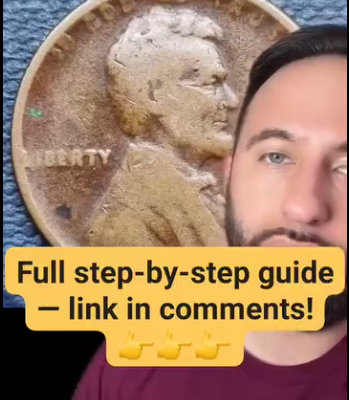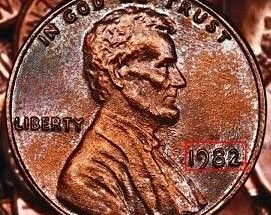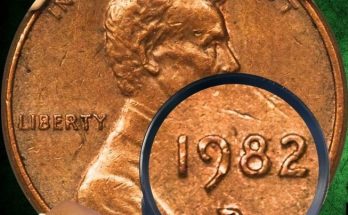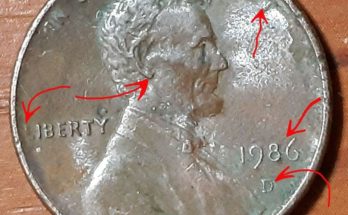😮 Don’t Throw Away That 1922 Penny! Rare “No-D” Examples are Worth Thousands!
The humble Lincoln Wheat Cent, minted from 1909 to 1958, is perhaps the most heavily collected and searched coin in American history. While most pennies are worth face value or a few cents, the 1922 Lincoln Cent stands out as a genuine rarity, especially those missing the mint mark. The caption’s warning is legitimate: authenticated 1922 “No-D” pennies can easily sell for $450 to over $1,000 in lower grades, with top-tier examples realizing tens of thousands of dollars.
The key to this coin’s value is a unique minting error that happened exclusively at the Denver Mint (D) in 1922.
🔍 What Makes the 1922 “No-D” Penny So Valuable?
The extreme rarity and value of the 1922 Lincoln Cent are due to a malfunction in the minting process that led to the obliteration of the mint mark.
-
The Die Error: All pennies officially minted in 1922 came from Denver, and thus should have carried the small ‘D’ mint mark beneath the date. However, one of the working dies used to strike the coins became heavily worn or damaged, causing the ‘D’ mint mark to be sanded or polished off the die face entirely.
-
The Result: The resulting coins struck by this damaged die appear to be from Philadelphia (which did not use a mint mark at the time), but they are actually Denver-minted coins missing the ‘D’.
🚨 How to Identify the Genuine 1922 “No-D” Rarity
Because the 1922 “No-D” is one of the most famous and valuable error coins, it is heavily counterfeited. Collectors must look for several specific markers, which are all signs of a genuine, heavily worn Denver die:
-
Missing Mint Mark: The most obvious sign is the absence of the ‘D’ beneath the date “1922”.
-
Weak Strike on Obverse: Look for signs of a weak strike across the coin’s front (obverse). Specifically, the words “IN GOD WE TRUST” and the word “LIBERTY” are often faint or poorly defined.
-
Visible Detail on Reverse: Crucially, while the front is weak, the back (reverse) of the coin must show a relatively sharp strike. This contrast—a weak obverse and a sharp reverse—is the telltale sign of the genuine 1922 “No-D” error die.
📈 Value Breakdown of the 1922 Cent
The specific value is heavily dependent on the coin’s condition and the severity of the error.
| Condition Grade | 1922 “No-D” Estimated Value | Notes |
| Good (G-4) | $450 – $1,000+ | Heavily circulated, but identifiable. |
| Very Fine (VF-20) | $4,000 – $7,000+ | Clear details, moderate wear. |
| Uncirculated (MS-60) | $10,000 – $20,000+ | No wear, but may lack original luster. |
| Pristine (MS-64/65) | Auction record over $60,000 | Only a handful exist in this condition. |
🛑 Collector’s Protocol: DO NOT SELL IT!
Due to the high frequency of fake 1922 “No-D” cents (often made by grinding the ‘D’ off a common coin), authentication is mandatory.
-
Do Not Clean: Never attempt to clean the coin, as it destroys its collector value.
-
Verify the Faintness: Use a magnifying glass to check for the characteristic weak strike on the obverse and a clear reverse. If the ‘D’ was simply ground off, the area would look shiny and scraped.
-
Professional Grading: If you believe you have a genuine example, the coin must be submitted to a professional third-party grading service (PCGS or NGC). This is the only way to verify its authenticity and unlock its full market price.
Would you like me to search for the current highest auction record for a certified 1922 “No-D” cent?



